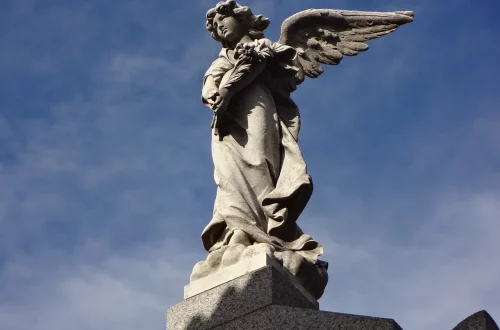
Exploring the Rich History of Old English Alcohol and Its Traditions
The history of alcohol in Old English culture is a fascinating tapestry woven from tradition, social gatherings, and the evolution of brewing techniques. This rich heritage offers a glimpse into the past, revealing how alcohol has played a significant role in shaping communities and fostering connections among people. From ancient mead halls to cozy taverns, the consumption of alcoholic beverages has been a constant throughout history, serving not only as a source of refreshment but also as a medium for storytelling, celebration, and ritual.
Alcohol has long been intertwined with various aspects of life, from religious ceremonies to everyday social interactions. The Old English period saw the emergence of distinct brewing practices that reflected regional availability of resources and local customs. As communities developed, so too did their preferences for specific types of alcoholic beverages, creating a diverse landscape of tastes and traditions. The significance of these drinks extended beyond mere consumption; they were often integral to the social fabric, facilitating gatherings and forging bonds among individuals.
Furthermore, the production and consumption of alcohol were influenced by various factors, including trade, agriculture, and even changes in societal structure. The rituals surrounding alcohol consumption, such as toasts and communal feasting, further highlight its importance in fostering unity and collaboration among people. As we delve deeper into the historical context of Old English alcohol, we uncover a world rich with cultural significance and enduring traditions.
The Brewing Techniques of Old England
The brewing techniques of Old England were as diverse as the landscapes they emerged from. Different regions developed their own methods based on the ingredients available to them, with barley and hops becoming staples in many areas. The process of brewing was often communal, involving families or entire villages working together to create their local ales. This collaboration was not only practical but also fostered a sense of community, as everyone contributed to the brewing process.
One popular method involved the use of simple ingredients like water, barley, and wild yeast. The barley would be malted, dried, and then mashed with hot water to extract sugars, which would later ferment into alcohol. This age-old method resulted in a variety of beers, each with unique flavors depending on the local water and barley used. The addition of herbs and spices was common, too, as brewers sought to create distinctive brews that represented their region.
As brewing techniques evolved, so did the understanding of fermentation and storage. The introduction of wooden barrels allowed for better aging of drinks and contributed to the development of flavors that would become sought after. Additionally, the influence of trade routes facilitated the exchange of brewing knowledge and ingredients, further enriching the diversity of Old English alcohol.
The communal aspect of brewing cannot be overstated. It was not merely a means to an end; it was an event that brought people together, allowing for storytelling, laughter, and shared experiences. While today we may think of breweries as commercial enterprises, in Old England, they were often the heart of social life, serving as gathering places where friendships were forged and tales were told.
The Role of Alcohol in Social Gatherings
Alcohol has always played a crucial role in social gatherings throughout Old English history. Whether it was a simple family meal or a grand feast, alcoholic beverages were an essential component. They served as a means to enhance the culinary experience, offering flavors that complemented the food while also facilitating conversation and camaraderie among guests.
In many instances, the act of sharing a drink was symbolic of hospitality and goodwill. Hosts would often provide a selection of beverages to their guests, showcasing their generosity and establishing bonds through shared experiences. Toasts became a customary practice, with individuals raising their glasses to honor one another, celebrate milestones, or simply enjoy the moment. These rituals were not just about the drink itself; they were about connection and recognition of the people involved.
Feasting was another significant aspect of Old English culture, and alcohol played a central role in these elaborate events. Large banquets, often held in great halls, would feature an array of dishes accompanied by copious amounts of ale or mead. The atmosphere was often lively, filled with music, laughter, and storytelling, all made richer by the presence of these beverages. The shared act of consuming alcohol during such gatherings reinforced social ties and created a sense of unity among participants.
Moreover, the traditions surrounding alcohol consumption varied across different regions and communities. Each area had its own customs and rituals, which added layers of meaning to the act of drinking. Whether it was the particular way in which drinks were served or specific toasts that were recited, these unique practices contributed to the rich tapestry of Old English social life.
In essence, alcohol was more than just a beverage in Old England; it was a vital element of social interaction, serving as a bridge between individuals and communities. The shared experience of consuming alcohol fostered connections that transcended mere acquaintance, creating bonds that were often highlighted through rituals and communal celebrations.
Alcohol and Its Connection to Rituals and Celebrations
Throughout Old English history, alcohol was deeply intertwined with various rituals and celebrations, marking significant events and transitions in life. From weddings to harvest festivals, the consumption of alcoholic beverages was often seen as a way to honor the occasion and those involved. These rituals were not only about celebration but also served to deepen cultural understanding and reinforce societal values.
One notable tradition was the use of mead during weddings. Mead, often referred to as the “nectar of the gods,” was a symbol of fertility and prosperity. Couples would share a drink of mead as part of the wedding ceremony, signifying their commitment to one another and the hope for a fruitful union. This act was steeped in tradition, with roots in ancient customs that celebrated the sanctity of marriage and the bonds of family.
Harvest festivals were another significant occasion where alcohol played a central role. Communities would come together to celebrate the bounty of the land, and these gatherings were often accompanied by feasting and drinking. Ales and ciders made from the season’s produce were shared among villagers, creating an atmosphere of joy and gratitude. Such celebrations not only honored the hard work of the harvesters but also reinforced the sense of community, as individuals came together to partake in the fruits of their labor.
The spiritual connection to alcohol was also prevalent in religious ceremonies. In many instances, offerings of drink were made to deities, symbolizing respect and gratitude for the blessings bestowed upon the community. Such practices highlighted the importance of alcohol in spiritual life, serving as a medium through which individuals could express their reverence and connection to the divine.
Overall, the connection between alcohol and rituals in Old English culture is a testament to its significance in marking life’s pivotal moments. These traditions, steeped in history and meaning, reveal how alcohol served as a catalyst for celebration, community bonding, and a deeper understanding of cultural values.
The Legacy of Old English Alcohol in Modern Culture
The legacy of Old English alcohol continues to influence modern culture, with many traditions and practices still evident today. The craft brewing movement, for instance, has seen a resurgence in interest, with many brewing techniques and recipes inspired by historical methods. This revival not only pays homage to the past but also emphasizes the importance of community and local ingredients, echoing the communal brewing practices of Old England.
Moreover, the significance of toasting and sharing drinks during social gatherings persists in contemporary society. Whether at weddings, parties, or casual meet-ups, the act of raising a glass remains a universal gesture of goodwill and celebration. These traditions serve as a reminder of the rich history that underpins our modern practices and the ways in which alcohol continues to foster connections among people.
Culinary trends also reflect the enduring impact of Old English alcohol. Many restaurants and pubs have incorporated traditional ales and ciders into their menus, celebrating local brews and honoring the historical connection to the land. This melding of past and present not only enriches the dining experience but also highlights the ongoing relevance of alcoholic beverages in contemporary culture.
The rituals surrounding alcohol consumption have also evolved, adapting to the changing dynamics of society. While the traditional mead hall may no longer exist, the spirit of community and celebration lives on in modern pubs and breweries, where people come together to share stories and create memories over a drink.
In conclusion, the rich history of Old English alcohol is not just a relic of the past; it is a living tradition that continues to shape our social interactions and cultural practices today. By exploring this legacy, we gain a deeper appreciation for the ways in which alcohol has influenced our lives and communities throughout history.
*Disclaimer: This article is for informational purposes only and does not constitute medical advice. Always consult a healthcare professional for any health-related concerns.*




